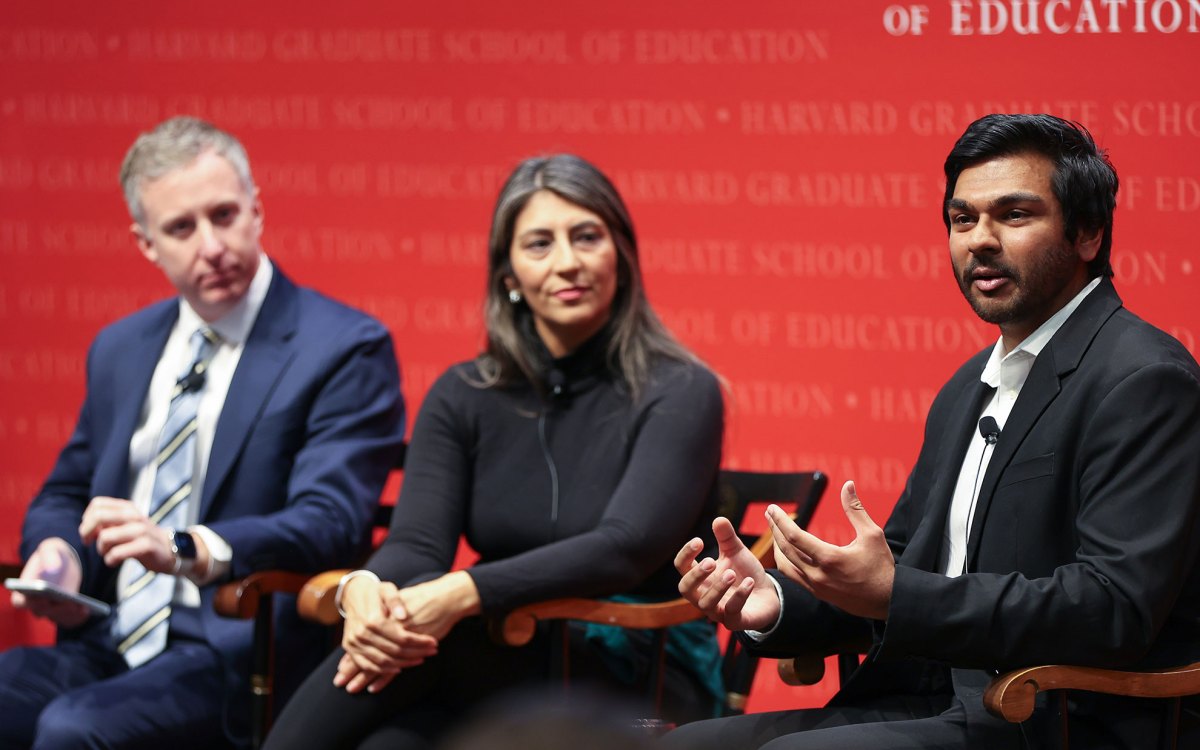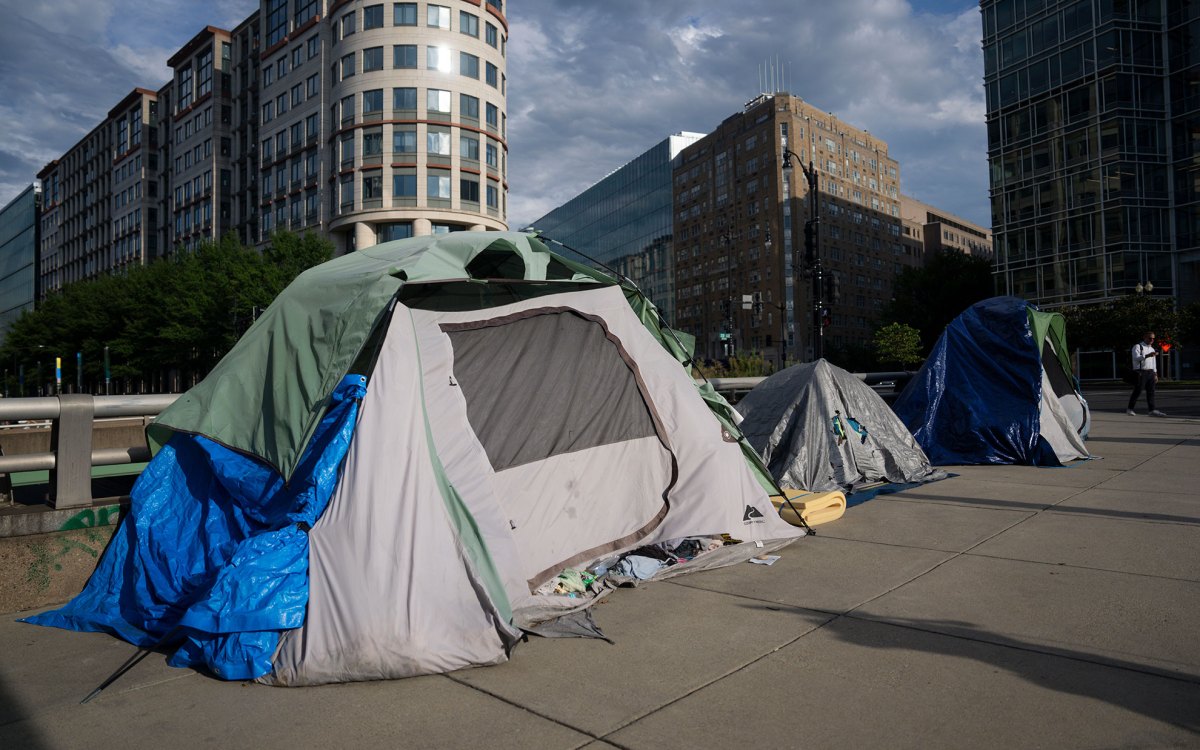Girls fell further behind in math during, after pandemic

Leading sociologist says emotional, family, social disruptions likelier cause than school closures
It’s no secret that the COVID-19 pandemic was a seismic event for the nation’s schoolchildren.
But the disruption wasn’t evenly distributed. And scholars are only now beginning to understand the differential effects.
Sean Reardon, a renowned sociologist of education and inequality at Stanford, brought one such pattern to campus last week: Girls’ math scores suffered more than boys’ during and after the pandemic, and lower-income girls now face steeper “gender gaps” in math than do those in more affluent communities, all for reasons that are less than completely clear.
The public seminar was held last Tuesday evening by the Center for Education Policy Research. It was a homecoming for Reardon, who earned his masters’ and doctorate at Harvard Graduate School of Education (HGSE) in the 1990s.
At a packed lecture hall in HGSE’s Longfellow Building, Reardon previewed unpublished results developed alongside two of his graduate students, Sadie Richardson and Sofia Wilson. They’re based on an ongoing analysis of the nation’s educational recovery from COVID-19, conducted at Stanford’s Education Opportunity Project, where Reardon is faculty director.
That project has established a clearinghouse of American education data, bearing on segregation and inequality of opportunity as well as COVID-related learning loss. And, even with the peak of the pandemic still in recent memory, the amount of data available is massive, Reardon noted, because of its granularity.

Sean Reardon.
Niles Singer/Harvard Staff Photographer
At each of 7,000 school districts across 41 states, he said, “We might have up to 336 observations: 14 years, six grades, two subjects, two genders [under study].” In the end, that means the analysis weighed roughly 320 million test scores altogether.
That data — skewed as it is by geography, test type, and availability of data — requires statistical massaging before sociologists can make fair comparisons. Still, its scale allows for rigorous insight.
Reardon said: “You know the old joke: The couple comes out of the restaurant and the wife says, ‘The food was terrible!’ And the guy says, ‘Yeah, but at least there was a lot of it.’ Our data is imperfect, but there’s a lot of it.”
The scale allowed for what Reardon dryly called “a difference-in-difference-in-difference-in-difference analysis … a four-way interaction” between pandemic effects, individual school districts, time, and gender.
The Stanford model anticipated that girls’ math scores would lag behind boys’, as they’ve done historically (though the opposite is true in reading). And, after a period of tightening, it showed that the math gender gap was arguably widening again even before 2019.
But with the most recent data subjected to a large and complex multivariate model, Reardon’s early conclusion is that the setback the pandemic dealt to American girls’ achievement in math was unexpectedly large — and difficult to explain.
One hypothesis, Reardon said, is “that girls were expected to take on more caregiving roles during the pandemic. Younger kids are at home, they can’t go to childcare, and so older girls might have less time to spend on school.”
There’s some evidence to suggest that uneven uptick in non-school responsibilities was real for girls around the world, but Reardon noted that on its own it likely wouldn’t explain a relative decline in math or affect third- through eighth-graders as profoundly.
Reardon’s lab has also weighed a related theory that the pandemic, which some argue caused a reversion to traditional gender roles, saw girls “given a message that maybe math isn’t as important,” or — separately — a possibility that girls were more affected by the psychic toll of loss and lockdowns.
Though Reardon’s model had millions of scores to work with, his team also included other variables. Notably, that included an array of socioeconomic and political measures from a school district’s poverty rates and COVID-19 mortality to an index of “social connectedness” derived from Facebook data.
With those factors added, the conclusions became even more surprising, Reardon noted.
First of all, actual pandemic-related disruption (time spent in remote schooling and local rates of temporary joblessness or remote work) didn’t seem to affect the gap. But other things did.
“Prior to the pandemic, this is the pattern: Score gaps are more boy-favoring in math in affluent places and less so are reversed in poor places,” Reardon said. But in this preliminary study, his team found that, between 2019 and 2024, the pattern flipped: Girls fell behind boys by more in districts with fewer resources.
And they define “resources” broadly. Gaps tended to grow more in communities with low levels of wealth, high rates of COVID mortality, low levels of school staff, or low social capital.
Taken together, Reardon’s team proposes that the widening gender gap in math appears to have been driven by “non-school” factors.
The disruption of community life, feelings of threat and grief that accompanied the pandemic, Reardon concluded, led to “more social isolation, more anxiety and depression, maybe a reversion to traditional gender roles … or more caregiving,” which in turn may have taken a toll on girls’ progress in particular.
Reardon’s talk kicked off CEPR’s annual series of public seminars, part of its Partnering in Education Research program. The next event is scheduled for Dec. 2, with education economist Mahounan Yedomiffi.




